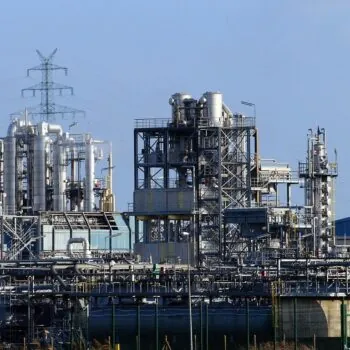With the EU facing acute geopolitical, economic, cost-of-living, and climate challenges, the Clean Industrial Deal (CID) presents an opportunity to deliver a European economy that ensures long-term security, sustainability and prosperity. Securing the well-being of Europeans as workers, consumers and people requires embedding a strong social dimension in the CID.
Delivering competitiveness in the EU by improving social standards
The immediate challenges of today – growing costs of living and inequality, geopolitical instability, increasing impacts of climate change, and a rise in anti-democratic forces – must be confronted in way that ensures public buy-in and lays the building blocks for long term prosperity. The competitiveness of the EU’s economy, rooted in its strong social model, is crucial for delivering tangible benefits for businesses, workers, and communities alike. The Competitiveness Compass, the EU’s new “economic doctrine” presented in January, recognises this. The CID needs to articulate how this more inclusive vision should be applied to the EU’s manufacturing sector, its workers and the public goods and services that underpin it.
Europe’s industrial policy agenda can simultaneously deliver competitiveness, decarbonisation, societal resilience and social fairness by improving social standards. The EU must avoid adopting a similar approach to that taken in response to the 2009-2015 financial crisis, where the pursuit of growth and balanced budgets came at the expense of investment in people. This resulted in flatlining productivity growth, skills shortages in key sectors for innovation (clean tech, IT) as well as declining societal resilience and wellbeing (education, health, care).
The EIB’s Investment Survey 2023 makes clear that the lack of skilled staff is a bigger obstacle to investment than labour market regulations. The CID is an opportunity for the European Commission to show that it has learned from past mistakes and takes the recommendations from Mario Draghi’s report on EU competitiveness and Enrico Letta’s report on the future of the Single Market to heart: by increasing investments in public goods and services to support the freedom to stay.
The core objectives of competitiveness and well-being can be mutually reinforcing. The Competitiveness Compass established that Europe’s social model, characterised by its focus on workers’ rights, quality education, in-work training, collective bargaining, inclusion, welfare, and solidarity, constitutes a distinct competitive advantage. By promoting skills acquisition and retention, improving labour market participation and providing counter-cyclical macroeconomic stability, social investment policies have a positive impact on growth, productivity and competitiveness. This was recognised by the Council of the EU in November 2023. The CID presents the opportunity to bring these together in a cohesive vision for the competitive sustainability of the EU’s manufacturing sector.
Delivering a socially fair Clean Industrial Deal
A successful CID should therefore include actions across five categories:
- Governance: Existing institutions must be given the capacity and mandate to approach decisions on the geographic and sectoral allocation of resources with a long-term perspective, balancing the needs of existing incumbents as well as those of new stakeholders and civil society, while enabling the necessary speed and scale of change. All stakeholders should be engaged in the decision-making process, including local and regional actors.
- Investing in public goods and services is essential for a competitive industrial sector as it enables access to infrastructure, healthy and skilled workers, as well as environmental services. Tackling inflation and affordability for households, including the affordability of energy and the clean transition is critical to address inequality.
- Centring workers and communities requires protecting individual and collective rights as the EU adapts to a new economic reality. The CID must address the need for a Just Transition across impacted sectors, operationalise a right to stay, and create opportunities for marginalised groups and combat poverty. Guaranteeing workers’ rights and strong collective bargaining could take the form of a Just Transition Framework Directive, as called for by the European Trade Union Confederation. Priority support should be given to projects that “Do Significant Benefit” to ensure a socially and environmentally just transition (for instance addressing legacy brownfields) and real benefits in local communities.
- Data and reporting must be updated to be fit-for-purpose, setting the right metrics to monitor success and analyse the impact and potential of different regions – classic indicators like growth, jobs and profitability must be balanced with indicators for wellbeing, innovation capacity and sustainability. Employment mapping at the regional level and timely data on impacts could be done by regional observatories in support of the EU Just Transition Observatory, informing allocation of resources, identifying skill or transition needs, and evaluating the feasibility of the “freedom to stay.
- Strengthening circularity can present new opportunities for the EU and requires cross-sectoral analysis of the impacts and potential of circular business models on jobs and services. The circular economy as a whole-of-economy approach must be leveraged to capture the benefits of using resources more efficiently, to reduce dependencies and extraction. The Circular Economy Act should recognise the role played by social economy actors in this field.


